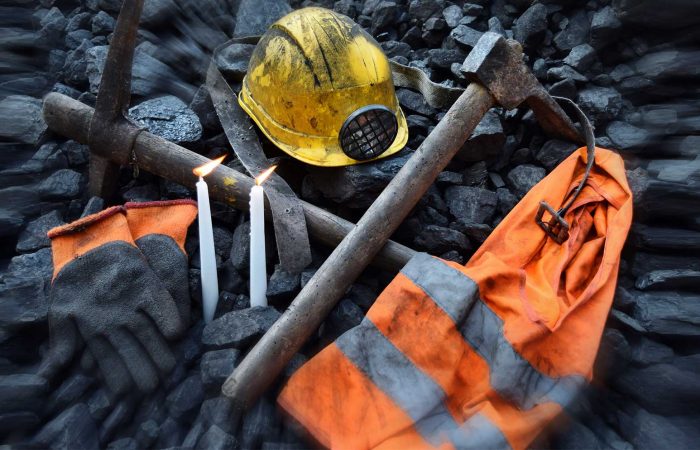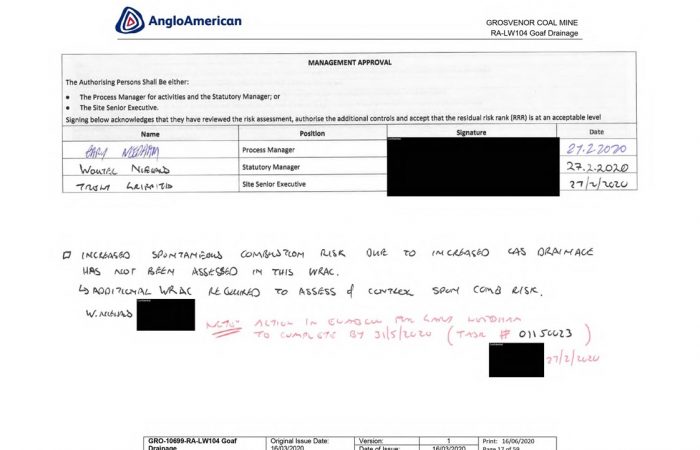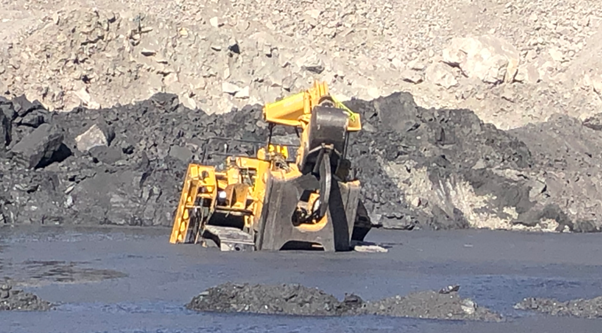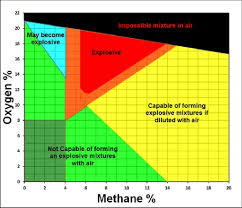
Gareth Dodunski Coroners Court Findings. Fatality at Santos Fairview Lease Sunday, 23 June 2013.
The Coronial Findings were handed down yesterday over 10 years since Mr. Gareth Dodunski a Leasehand worker for the gas drilling contractor Saxon Energy Services Australia Pty Ltd. (Leasehand is a cleanskin entry level worker)
https://www.courts.qld.gov.au/__data/assets/pdf_file/0011/778106/cif-dodunski-g-20230831.pdf
The findings and the background especially from his parents Phil and Michelle are also covered in part of the ABC 730 Report last night from the 18th Minute to 24th Minute
https://iview.abc.net.au/video/NC2301H136S00
I have only read half of the Coroners Report so far and will make further comment after I have done so.
The most galling and disgusting part of the whole thing is that it has taken 9 years for Coroners Court Proceedings to even start.
Again there is a failed prosecution by what is now the RSHQ and then appeals that occurred until 2020.
It is only due to the sheer persistence and knowledge of the industry by Gareth’s Parents that was a Coroners Court was held at all.
No parent should ever be put through what these incredibly strong couple have.
My view for what it is worth is that the Coroners Court should happen within a year and be completed well before the expiry of the current 3 year time limit to initiate a prosecutions.
Below is a full copy of the Executive Summary
EXECUTIVE SUMMARY
Mr Gareth DODUNSKI (“the deceased” or “Gareth”) was 21 years of age when he died at the Fairview Mining Camp, about 66km east of Injune, in Queensland, on Sunday, 23 June 2013.
He was working as a Leasehand on drill rig 185, operated by Saxon Energy Services Australia Pty Ltd (“Saxon”) as contracted by Santos Limited (“Santos”).
Gareth died after being struck in the head by an item of drill rig machinery called an ‘ST-80 Iron Roughneck tool’ (ST-80), which is a large hydraulic torque wrench used to separate drilling pipes extracted from the ground.
At the time of this fatal incident, the deceased was working with another Leasehand, Mr Daniel Mullings, to attach a ‘dog collar’ to a section of the drill string before the ST80 was activated.
Mr Mullings and Gareth were on opposite sides of the drill string and were to leave the ST-80 operating area before it was operated from an adjoining operating box or “doghouse” by the driller, Mr Jacob Kilby.
Tragically, Mr Kilby engaged the ST-80 while Gareth was still in the ‘danger’ zone of the ST-80, positioned between it and the drill string. It extended forward toward to well centre and struck Gareth, crushing him against the drill string. Gareth died at the scene from catastrophic head injuries.
The essential factual basis of what occurred is not greatly disputed. This death was not an accident. The law does not recognise an event as an accident when there was a duty to keep the injured person safe.
The difficulty prosecuting safety breaches is identifying the extent of the breach of that duty and whether an individual or legal entity
should be prosecuted and which charges to allege under the relevant statutory penal regimes. However, that prosecutorial discretion is not a matter for this Court.
Unfortunately, this tragic fatality was the subject of a failed prosecution of Mr Carl Thomas at first instance and by the Industrial Court of Queensland overturning the lower court convictions of Mr Kilby and Saxon on appeal in 2020. Not only did that cause substantial delays but it also caused a misguided assumption by some that the Coroner would act as a “Court of Appeal” and effectively reinstate these convictions.
That is not the role of the Coroners Court. It has a therapeutic jurisdiction looking for causes and potential preventions, not blame and liability. It operates on a different standard of proof, onus of proof, admissibility of evidence rules and has no jurisdiction to adjudicate on criminal convictions.
The incident that resulted in Mr Dodunski’s death could be seen as being solely the consequence of momentary inattention on the part of Mr Kilby when he activated the ST-80 which struck the deceased causing his death.
However, a focus on identifying individuals to blame for the incident is not helpful when looking for ways to prevent similar deaths from happening. Human errors can occur in the best organisations with the most sophisticated systems and workers do not go to work wanting to breach safety protocols. Accordingly, it is important to consider the broader context in which errors occur in order to find ways to prevent incidents. This reflects the contemporary theories of Sidney Dekker and the “Swiss Cheese Model” of Professor James Reason in their writings on accidents and system failures.
Some of those “human errors” in this case were outlined on 5 June 2014 in a ‘Petroleum and Gas Inspectorate Report’ in relation to the incident. In that report, the authors concluded that the evidence gathered in the course of the investigation by the then Department of Natural Resources and Mines (“DNRM”) identified the following contributing failures:
1. Saxon failed to satisfactorily implement risk management systems to identify, assess and mitigate this safety and health risk to workers.
2. The design, installation, and commissioning of the rig did not satisfactorily isolate workers from the ST-80 energy of the rig as per the Plant Code of Practice 2005, a safety requirement called up by the Petroleum and Gas Act (Qld).
3. There were no visual or audible warning alarms to make workers aware of the pending or actual activation and movement of the ST-80.
4. The Emergency Stop Button (ESB) for the ST-80 was not easily visible or accessible on the ST-80 or in the Driller’s cabin.
5. The Emergency Stop Button (ESB) on the ST-80 was misused as an isolation switch and its emergency use was not readily apparent to the crew.
6. On 23 June 2013, there was no specific Job Safety Analysis or Work Instruction available for the task being undertaken, the deceased’s crew did not conduct a Pre-Tour Safety Meeting prior to the task and the Safety Management Plan was not followed by the rig crew in relation to the assessment of risk.
7. Some workers were not yet competent to undertake the tasks to which they were assigned, and experienced workers were not available to supervise workers who were not yet competent.
8. None of Saxon, Santos or the deceased’s crew formerly actioned risk concerns about the ST-80 following a similar incident in South Australia and Saxon did not act on informal safety concerns raised by the crew in relation to the ST-80.
9. Floor crew did not confirm isolation of the ST-80 (using the ESB) prior to attempting to install the slips and Mr Kilby did not confirm isolation of the ST-80 (using the ESB) with the floor crew or on the HMI screen.
10. Mr Kilby attempted to stop the ST-80 by pressing an incorrect button on the touch screen and did not attempt an emergency stop of the ST-80 using the other hard-wired button.
By way of background, in 2013 south-east Queensland was undergoing a gas exploration boom. Whilst, it could never make an excuse, companies like Santos and Saxon were experiencing severe staff shortages which led to less experienced personnel operating dangerous equipment. Since 2013, what is clear, is that each of the above concerns and others have been addressed in some way by Santos, Saxon,
and Resources Safety and Health Queensland (through its various compositions).
My task, in reviewing the fatality some ten years later makes it no less tragic but difficulties arise because of that effluxion of time.
I should also note that the Driller, Mr Jason Kilby, whose momentary inattention was a major contributing factor to Gareth’s death, was an impressive witness. He was contrite, credible and readily acknowledged his failings. He contributed to the investigation of improvements to prevent repetition of such a tragedy and his distress was still apparent some nine years after the event.
Last, although it has caused considerable work for this Court and other government agencies, the tenacity of Gareth’s family to undercover the complete circumstances behind his death, should be regarded with approbation. Gareth’s life was taken far too soon, and it is hoped that one legacy will be enlightenment of the work health and safety failures on 23 June 2013.



Hi Stuart, Thank you for all your support.
We have pointed out on several occasions now to the coronial court, including in our own submissions and to the Counsel Assisting …Gareth was NOT a leasehand he was the next position above a Floorman (roughneck) but it has still gone into the findings incorrect at no time was Gareth ever employed with Saxon as a leasehand. We were told when we pointed this out that the roles were somewhat “interchangeable” by Counsel Assisting ….. that is incorrect they are two different roles a leasehand is the green role that covers the entire lease and a floorman has experience and works the drill floor. Gareth had previously worked as a leasehand for another Company. There were several errors in the CA submissions which we pointed out one critical one they added supplementary submissions to and the other two they suggested we point out in our submissions which we did but they have not been corrected in the findings. They have stated the crew apart from Cliff Monks were unqualified in their roles…Gareth was qualified and had just been signed off on his qualification on the day they killed him, which was noted in the investigators report and confirmed by a witness at the time whose interview is in the BOE also.
Still trying to get our heads around the lack of recommendations and all the failures for over 10 years.